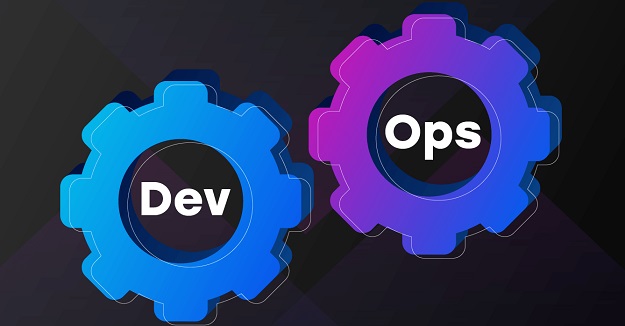DevOps is the collaborative process of bringing your development and operations team together. Getting your business aboard the DevOps train can be scary for you and your staff. There are many reasons why some developers are still hesitant to adopt the DevOps mindset. For starters, change can be scary. The prospect of learning and navigating numerous new tools can feel overwhelming and counterintuitive when all you want to focus on is writing code and pushing a great product.

Some developers are weary of the operational side, and even a bit fearful that DevOps processes will automate them out of a position. This couldn’t be further from the truth; in fact, DevOps engineers are now the most sought after positions on platforms like LinkedIn and Indeed. If you want to ensure the future of your business, it’s time to shift your company-wide mentality. Here are a few ways you can get your team started with DevOps:
1. Build Your DevOps Strategy
First thing’s first: you need a strategy in place to build interdepartmental collaboration. There are several practices you should follow here under your new infrastructure. Start with a clear and transparent conversation with your team. During a staff-wide meeting, explain why DevOps is important for the longevity of the business, provide concrete examples, and let them know what to expect as you begin implementing DevOps principles.
To begin with, your development and operations team should be put into a shared working DevOps environment. This allows everyone access to a high-level overview of what’s happening in the development cycle. From here, set a common goal for your newly integrated teams and get to work.
2. Use the Right Methodology
Think of DevOps as the plumbing and electrical systems that keep a home running efficiently without much intervention. Using the same analogy, you could say that the methodology you choose to work with is the home’s foundation. A single methodology grants your team’s total visibility across your projects.
An agile methodology is the best way to go when it comes to DevOps (two of the most common agile methodologies include Kanban and Scrum), although it’s certainly not required if you’ve found there’s another process that works better for your team. With an agile approach, it becomes easier to break down complex projects into smaller iterations for quicker delivery.
3. Invest in Technology
DevOps and technology are synonymous with one another, and cannot be separated. For instance, take a look at these DevOps tools by jFrog. These tools help spearhead automation, which is a huge component of DevOps. Cloud-based applications like Kubernetes, Git, Docker, and Helm have transformed the way we approach development, deployment, and testing. Ultimately, these automated tools help prevent scope creep from occurring, as team members are easily able to manage the features that are being prioritized and automation tools help drastically reduce the chance of human error.
4. Build Your CI/CD Infrastructure
Continuous delivery & continuous integration (CI/CD) revolves around the ability for development teams to always be producing. Rather than wait for long lengths of time until a product is perfect, they can continuously push their software through the pipeline with small improvements and silently fix and add new code on the backend.
Any software company must constantly be listening to user feedback and stakeholder input and transitioning those requests into tangible code based on feature prioritization. CI/CD tools make this possible. If you dig a little deeper, you’ll find that all agile startups are deploying code constantly, several times per week, and need flexible platforms that make this possible.
5. Measure Your Outcomes
If you don’t start measuring everything, you’ll never know how worthwhile your DevOps integration actually is. If you want to make the biggest ROI on your DevOps efforts, you need quantifiable data. For example, dig deeper into your time to market statistics. How fast were you getting your features out to customers and clients pre-DevOps, and how has that speed changed after implementation? What does your average cycle time look like? When you experience a setback, how quickly are you able to fix it? Having answers to each of these questions will help you better analyze your complete DevOps transformation.




